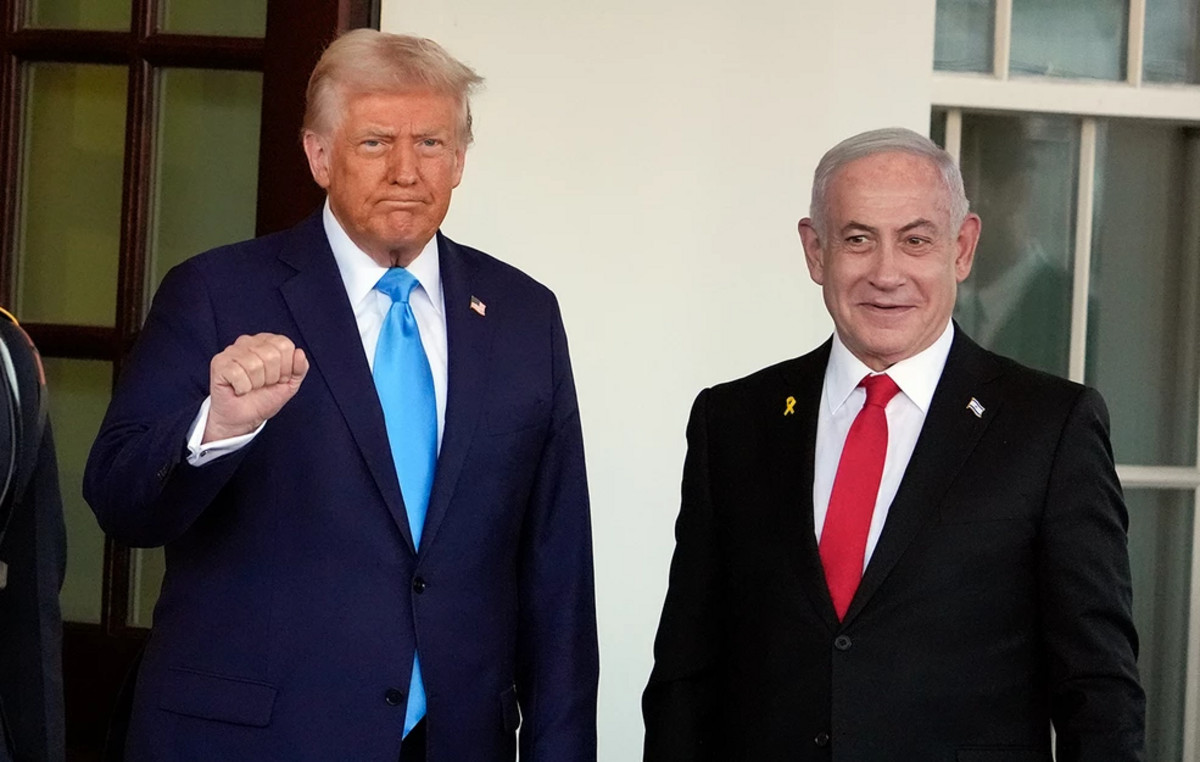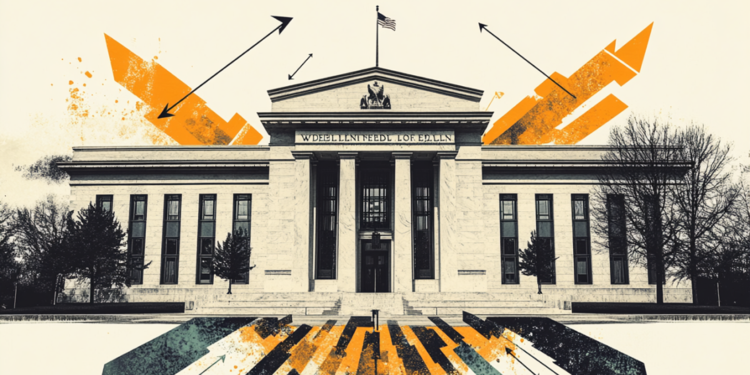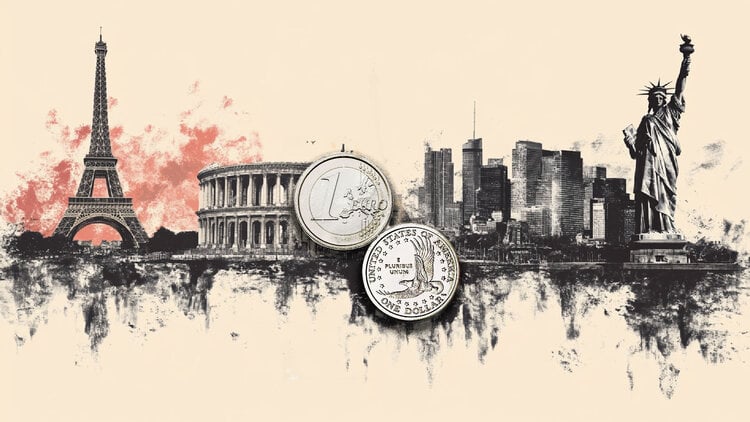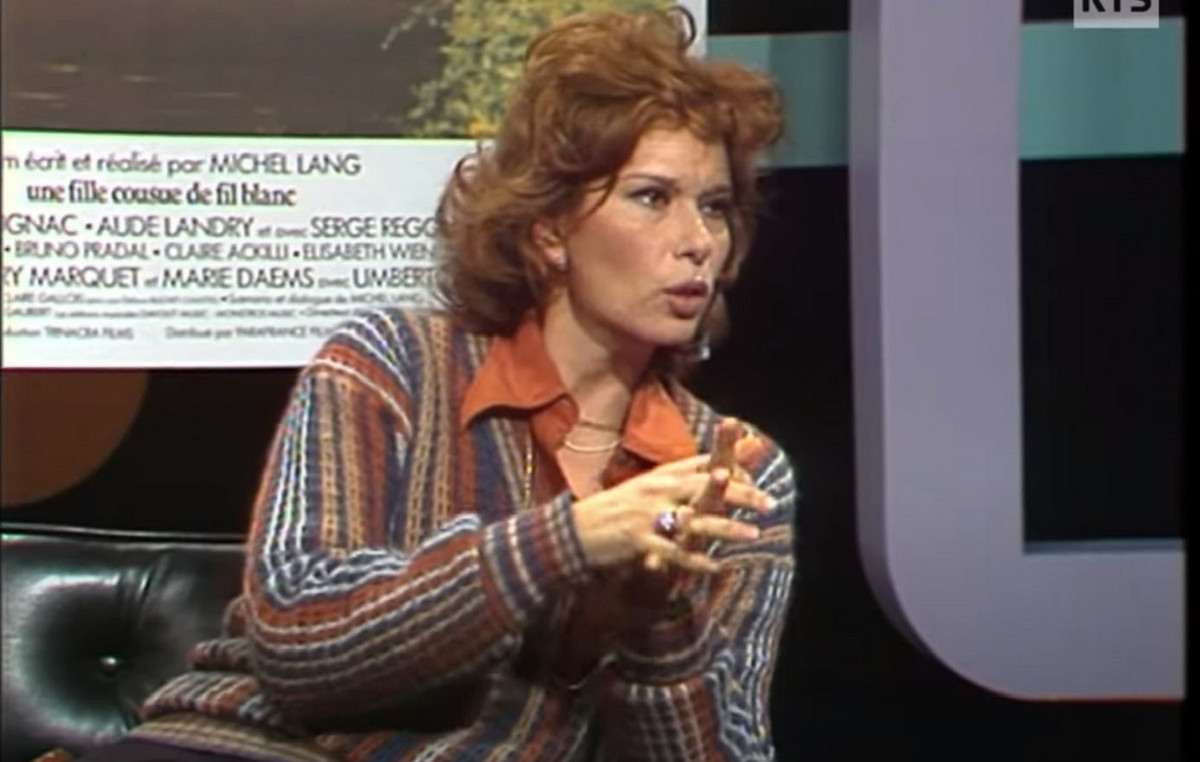- The euro remains stable near maximums of more than three years against the US dollar, backed by a moderate appetite for risk.
- The weak US data and the greatest hopes of Fed’s interest rate cuts are weighing on the US dollar.
- EUR/USD maintains its positive tone with resistance in 1,1630-1,1640 and 1,1700.
EUR/USD It is being practically flat on Wednesday, just below a maximum of several years about 1,1640, last seen in November 2021, consolidating profits after a rally of almost 1.40% in the previous two days. A moderate appetite for the risk Continue promoting the Markets, despite the fragility of the high fire between Israel and Iran, and is keeping the US dollar (USD) in a weak position.
Oil prices have risen since Tuesday’s minimums but continue well below the maximum seen last week. Iran’s oil and natural gas facilities seem to have been little affected by bombings, and oil trafficking through the Strait Strait of Ormuz does not seem to be threatened, at least for now. Relatively low crude oil prices are an additional support for the euro (EUR) as they relieve inflationary pressures on the eurozone economy.
In the US, on Tuesday, the president of the Federal Reserve (FED), Jerome Powell, reiterated that the Central Bank is in no hurry to cut interest rates in the semiannual monetary policy report to Congress. The pressure of US President Donald Trump and the growing dissent between FED officials do not seem to have affected Powell’s hard line posture.
However, the market continues to bet on a rate cut in September, especially after the pessimistic reading of consumer confidence published on Tuesday. The growing concerns about employment are limiting the purchase decisions of US consumers and increasing pressure on the central bank to adopt a less restrictive monetary policy.
Powell will testify again on Wednesday, but it is unlikely to change your views. The economic calendar is scarce on Wednesday, with only new housing sales data in the US for May. The News about developments in the Middle East will continue to drive markets.
Euro price today
The lower table shows the percentage of euro change (EUR) compared to the main currencies today. Euro was the strongest currency in front of the Japanese yen.
| USD | EUR | GBP | JPY | CAD | Aud | NZD | CHF | |
|---|---|---|---|---|---|---|---|---|
| USD | -0.01% | -0.06% | 0.25% | 0.11% | -0.13% | -0.35% | -0.05% | |
| EUR | 0.00% | -0.03% | 0.25% | 0.09% | -0.15% | -0.35% | -0.05% | |
| GBP | 0.06% | 0.03% | 0.26% | 0.14% | -0.10% | -0.32% | 0.01% | |
| JPY | -0.25% | -0.25% | -0.26% | -0.19% | -0.36% | -0.56% | -0.27% | |
| CAD | -0.11% | -0.09% | -0.14% | 0.19% | -0.17% | -0.33% | -0.13% | |
| Aud | 0.13% | 0.15% | 0.10% | 0.36% | 0.17% | -0.27% | 0.11% | |
| NZD | 0.35% | 0.35% | 0.32% | 0.56% | 0.33% | 0.27% | 0.33% | |
| CHF | 0.05% | 0.05% | -0.01% | 0.27% | 0.13% | -0.11% | -0.33% |
The heat map shows the percentage changes of the main currencies. The base currency is selected from the left column, while the contribution currency is selected in the upper row. For example, if you choose the euro of the left column and move along the horizontal line to the US dollar, the percentage change shown in the box will represent the EUR (base)/USD (quotation).
What moves the market today: appetite for the risk and hopes of fed cuts keep the USD on the defensive
- The euro (EUR) is driven by the weakness of the US dollar. The American dollar index (DXY), which measures the value of Dollar facing six foreign exchange main, it remains depressed near minimum of three years, in 97.60, weighed by the positive feeling of risk triggered by the fragile peace agreement in the Middle East and the greatest hope that the Fed is forced to cut the interest rates, probably in September.
- The high fire between Israel and will be announced by President Trump on Monday seems very fragile but remains, at least for now. This is feeding a moderate appetite for the risk on Wednesday, keeping the euro ons and weighing on the demand for shelter assets such as the US dollar.
- However, US intelligence reports are generating doubts about the durability of the truce. According to a preliminary evaluation, American bombing in Iran’s nuclear sites could have delayed its program only one or two months, instead of “annihilating it” as Trump said after attacks. It is difficult to ensure that this new context guarantees lasting peace.
- In the macroeconomic front, the Eurozone data revealed on Tuesday that the IFO business climate index of Germany increased to 88.4 in June from 87.5 in May, slightly above the expected 88.3. The Index of Business Expectations also improved, at 90.7 from the previous 88.9, exceeding the expectations of a 90.0 reading. However, the impact on the euro was marginal.
- In the US, the consumer’s confidence of the Board Conference deteriorated in the face of expectations in June, with the index falling to 93.0 From 98.4 (Uploaded from 98.0) In May, instead of the increase to 100.00 level forecast by market analysts. The survey revealed a deterioration both in the evaluation of the current situation and in economic perspectives, due to the growing concerns about employment availability, according to the report.
- These figures did not affect the cautious position of the president of the FED, Powell, on monetary policy, who reiterated that the Central Bank is “well positioned to wait”, since, he said, the price increases are expected to increase the price increases due to higher tariffs to increase inflationary pressures and weigh on economic activity.
- However, investors maintain their bets on future feat cuts in the Fed in the coming months. The Fed Watch data of the CME Group shows 18% probability of a rate cut in July and 85% in September, compared to 14% and 65% respectively, in the previous week.
EUR/USD continues positive with 1,1630 limiting the bulls for now
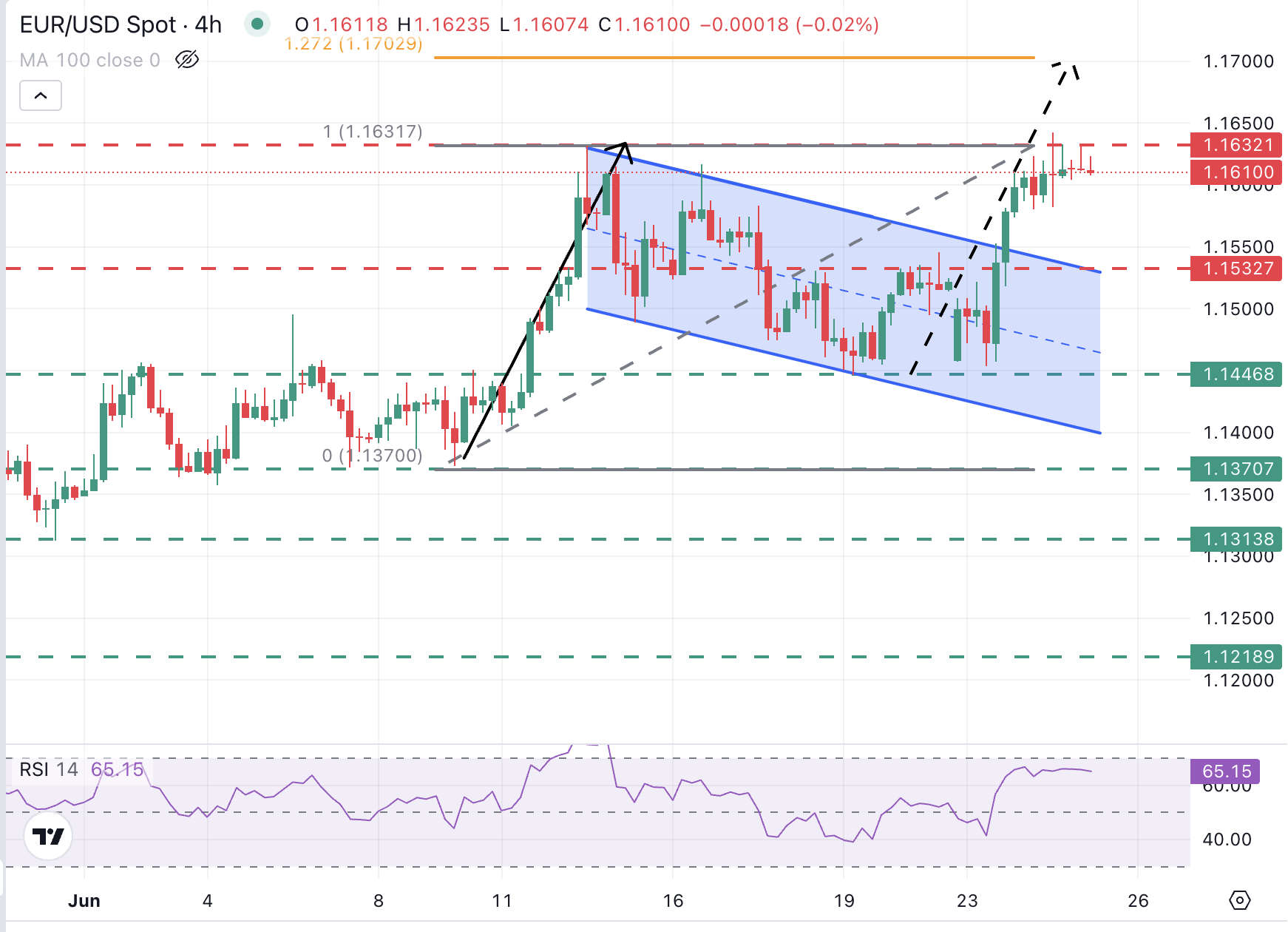
EUR/USD He resumed his widest bullish trend after breaking the top of the corrective channel of the last weeks, driven by the optimism of investors after Trump’s announcement of a high fire in the Middle East conflict.
The immediate resistance is at the maximum of June 12, in 1,1630, but the rupture of the resistance of the trend line in 1,1540 highlights a bullish flag formation with an objective measured in the 1,1700 area. This coincides with the Fibonacci extension of 127.2% of the rally from June 10 to 12.
In the lower part, a bearish reaction from the current levels could seek support in the broken trend line, now around the previous resistance area of 1,1535. A setback is not ruled out to test that level again. A confirmation below that level would cancel the upward perspective and focus the attention on the minimum of Thursday and Monday in 1,1445.
FAQS Central Banks
Central banks have a key mandate that consists in guaranteeing the stability of prices in a country or region. Economies constantly face inflation or deflation when the prices of certain goods and services fluctuate. A constant rise in the prices of the same goods means inflation, a constant decrease in the prices of the same goods means deflation. It is the Central Bank’s task to keep the demand online by adjusting its interest rate. For larger central banks, such as the US Federal Reserve (FED), the European Central Bank (ECB) or the Bank of England (BOE), the mandate is to maintain inflation about 2%.
A central bank has an important tool to raise or lower inflation: modify its reference interest rate. In precommunicated moments, the Central Bank will issue a statement with its reference interest rate and give additional reasons of why it maintains or modifies it (cut it or the SUBE). Local banks will adjust their savings and loan rates accordingly, which in turn will make it difficult or facilitate that citizens obtain profits from their savings or that companies ask for loans and invest in their businesses. When the Central Bank substantially rises interest rates, there is talk of monetary hardening. When it reduces its reference rate, it is called monetary relaxation.
A central bank is usually politically independent. The members of the Central Bank Policy Council go through a series of panels and hearings before being appointed for a position in the Policy Council. Each member of that council usually has a certain conviction on how the Central Bank should control inflation and the consequent monetary policy. Members who want a very flexible monetary policy, with low types and cheap loans, to substantially boost the economy, while comprising with inflation slightly greater than 2%, are called “pigeons.” Members who prefer higher types to reward savings and want to control inflation at all times are called “hawks” and will not rest until inflation is located at 2% or just below.
Normally, there is a president who directs each meeting, has to create a consensus between the hawks or the pigeons and has the last word when the votes must be divided to avoid a draw to 50 on whether the current policy must be adjusted. The president will pronounce speeches, which can often be followed live, in which he will communicate the current monetary position and perspectives. A central bank will try to boost its monetary policy without causing violent oscillations of the fees, the actions or their currency. All members of the Central Bank will channel their position towards the markets before a monetary policy meeting. A few days before a monetary policy meeting is held and until the new policy has been communicated, the members are prohibited from speaking publicly. It is what is called a period of silence.
Source: Fx Street
I am Joshua Winder, a senior-level journalist and editor at World Stock Market. I specialize in covering news related to the stock market and economic trends. With more than 8 years of experience in this field, I have become an expert in financial reporting.

